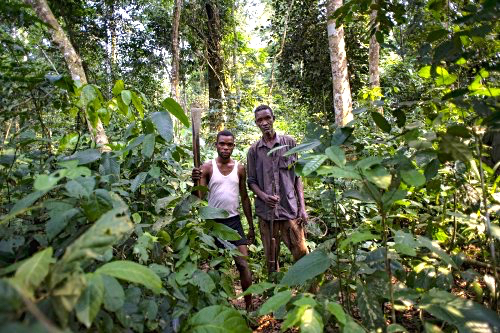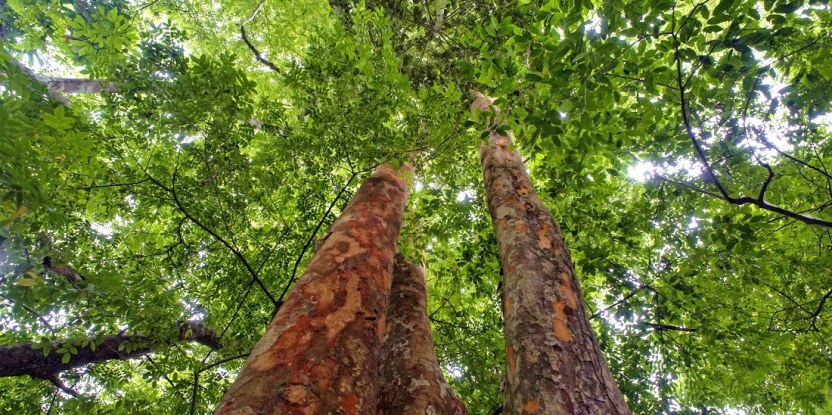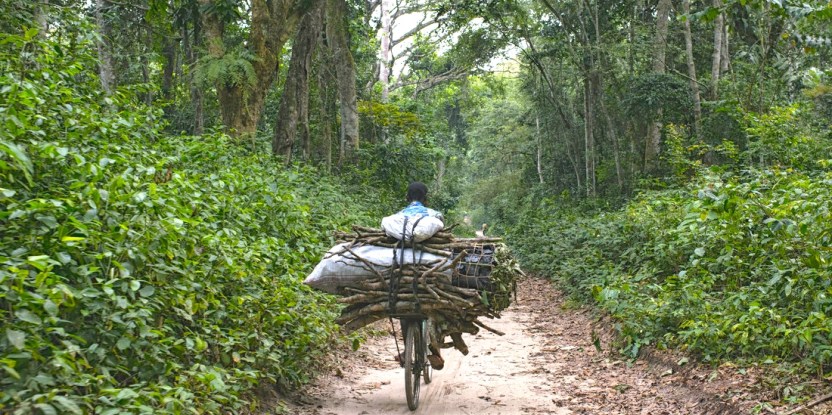
YAOUNDÉ, Cameroon—The narrative used to be straightforward: Rural communities in tropical countries battled logging companies in a zero-sum competition for forest resources.
But in the past decade, multiple-use forest management has become a way for precious tree resources to meet wide-ranging needs—beyond just timber.
Management plans designed to account for different forest uses have been enacted in areas of the Congo Basin, the second-largest tropical forest area in the world, where communities depend heavily on non-timber forest products (NTFPs) while more than 40 percent of the 200 million-hectare basin is allocated to commercial logging leases.
But how do these plans work in real life?
This question is the basis of a wide-ranging investigation by a team of researchers from Gabon, Cameroon and the Democratic Republic of Congo (DRC) and the Center for International Forestry Research (CIFOR) as part of a research initiative led by Bioversity International, called “Reconciling the Needs of the Logging Industry with those of Forest-Dependent People”—or “Beyond Timber” for short.
The researchers are examining how potential or existing sources of tension among different groups of forest users in Central Africa can be eased or prevented.
MORE NTFP DEMAND, FEWER TREES
Early findings, soon to be published, show that communities increasingly have to compete and work harder to gather their resources.
The research indicates that people now travel an average of six kilometers through forested areas to gather NFTPs—due in part to population growth, which increases demand for and pressure on NFTPs, even as the supply of the tree species that provide the NTFPs has stayed steady or at worst diminished as forests are cleared or logged.
These factors can lead to tension, according to the researchers: With increased numbers of people collecting non-timber forest products, and the rampant felling and burning of forests by farmers within forest concessions, there is a growing scarcity of many kinds of NTFPs, and people have to go farther to find them, they say.
While companies log for profit, most households hunting for NTFPs do so for sustenance—to feed their families, or to sell in small markets. Guillaume Lescuyer, a scientist with CIFOR and the French Center for International Agricultural Research for Development (CIRAD), says that situation can create friction between logging companies and rural communities.
Even though forestry laws ban agriculture within logging concessions, there are often enclaves of active farms within them, a situation that neither the concession holders nor governments are able to control.
Lescuyer sees no short-term solutions, saying that there is a need for better forestry legislation and governance that takes into account the needs and realities of forest communities—and holds corporations to account.
“The impact of actions undertaken by forest companies to improve the social well-being of the rural communities is generally insufficient and superficial,” he said.
THE VALUE OF A CATERPILLAR
As Bioversity notes, NTFPs such as wild nuts, fruits and leaves are overlooked by nutrition policy guidelines issued by the governments of Cameroon, Gabon and DRC.
That should be changed, according to Judith Ngondi Laure, a professor of biochemistry at the University of Yaoundé in Cameroon who says more data should be collected on the nutritive value of food from the forest. “It’s important to promote the consumption of non-timber forest products, not just for food security but also for the general well-being of rural and urban populations,” she said.
The researchers underscore the monetary value that NTFPs can have over time, making them more valuable over a tree’s lifespan than its timber. According to upcoming research from Bioversity, in DRC the market value of caterpillars harvested from Tali (Erythrophleum suaveolens) and Sapelii (Entandrophragma cylindricum) trees over their life spans is 34 and 13 times higher, respectively, than is the revenue that would be accrued from cutting the trees for their timber.
Most legislation governing forests focuses primarily on logging activities, while eclipsing the monetary benefits and cultural values that NTFPs bring to rural communities. Little attention is given to the contribution to state coffers that formalized harvesting could bring.
If forest landscapes in the Congo Basin are to be sustainably managed, there is a need for concerted collaborative efforts involving forest communities, logging companies and governments all working together to prevent conflicts that could lead to more deforestation.
For more information about this research, please contact Guillaume Lescuyer at g.lescuyer@cgiar.org or Julius Tieguhong at j.tieguhong@cgiar.org.
The “Reconciling the Needs of the Logging Industry with those of Forest-Dependent People” (Beyond Timber) project is led by Bioversity International. The project is funded by the Congo Basin Forest Fund and the CGIAR Research Program on Forests, Trees and Agroforestry.
We want you to share Forests News content, which is licensed under Creative Commons Attribution-NonCommercial-ShareAlike 4.0 International (CC BY-NC-SA 4.0). This means you are free to redistribute our material for non-commercial purposes. All we ask is that you give Forests News appropriate credit and link to the original Forests News content, indicate if changes were made, and distribute your contributions under the same Creative Commons license. You must notify Forests News if you repost, reprint or reuse our materials by contacting forestsnews@cifor-icraf.org.

